In addition to being an exciting outdoor activity, hog hunting has the added benefit of challenging your skills and helping to control the ever-increasing number of wild hogs in the wild. Hunting hogs is an essential part of the process of ensuring the protection of agricultural resources and maintaining the balance of the environment.
In this comprehensive guide, we’ll show you some hunting tips for beginners if you hope to become a successful hog hunter.
Hog Hunting Basics
If you’re planning to go hog hunting for the first time, you should gather some basic knowledge about these creatures and how they behave.
Habitat
Wild hogs live in forests, swamps, meadows, and other areas with dense vegetation. From cold climates to the hot deserts, these creatures are highly adaptable and can survive in a variety of habitats. They are most active at night.
Senses
Wild hogs have a heightened sense of smell, hearing, and sight, which helps them to detect potential threats and find food sources efficiently. Furthermore, they are extremely fast, allowing them to escape from pursuers at a great speed.
Diet
Wild hogs are omnivores, eating both vegetation and meat. Their main sources of food are fruits, nuts, roots, insects, small mammals, reptiles, and carrion. They will also feed on garbage and human food when available.
Social Behavior
Typically found in groups, wild hogs are sociable animals who interact with one another in a variety of ways. They also use scent to mark their territory. Sounders are groups of wild hogs that typically consist of a few adult sows and their young. Boars, adult males, are mostly solitary except during breeding seasons when they join sounders.
Reproduction
A female wild hog will typically produce litters of six to ten piglets per year, which is more rapid than the reproduction rate of domesticated hogs. Furthermore, wild hogs are capable of reproducing at a younger age than domesticated ones. Thus, if there is no control over their population, their numbers can grow rapidly.
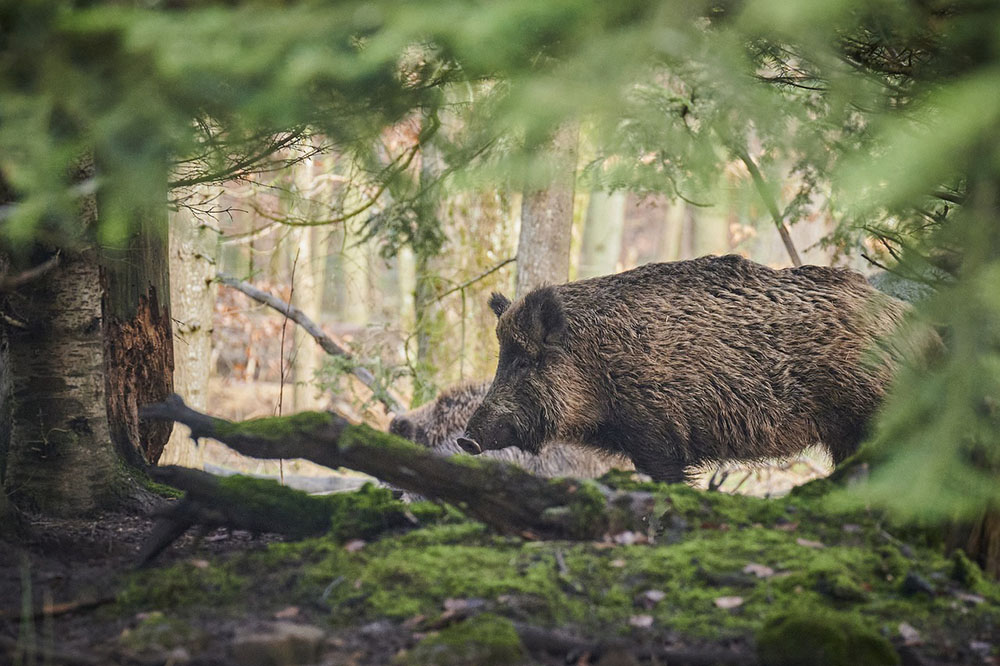
Choosing The Right Gear For Hog Hunting
In order to have a successful hog hunt, you need to have the right hunting equipment. The following are some basic items you will need:
Firearms
It is crucial to have a firearm that is suitable for hog hunting. Common choices include rifles, shotguns, and handguns. The most effective rifle for hog hunting is one with a caliber between .223 and .308. Handguns are not generally recommended as they are less powerful and have a shorter range. Shotguns are also an option for close-range hunting.
Ammunition
The ammunition you use for hog hunting must be able to deliver a powerful blow with just one shot. It is often recommended that hunters use high-velocity rounds such as the .223 Remington or .308 Winchester when hunting hogs. Shotguns with slugs can also be used for hunting hogs.
Optics
An optical device such as a red dot sight or scope can improve your accuracy and increase the likelihood of a successful hunt. In order to ensure clear sight of your target, make sure you select an optic with good clarity and resolution.
Camouflage
It is best to use brown, dark green, and black camouflage patterns when hunting hogs. Colors such as these are intended to blend into the surroundings and make you undetectable. Make sure your hunting area’s terrain and vegetation match the patterns you choose.
Hunting Boots
There should be extra ankle support in hunting boots, and the sole should be gripped well. Breathable and lightweight hunting boots are necessary for hunting hogs to avoid hot feet. For dry feet in wet conditions, waterproof material is also essential.
Hunting Backpack
The right hunting pack can help you carry essential gear, such as extra ammunition, snacks, water, first aid supplies, and any other items that you may need while hunting. To withstand rough terrain and intense physical activity, hog hunting packs are typically lightweight and durable.
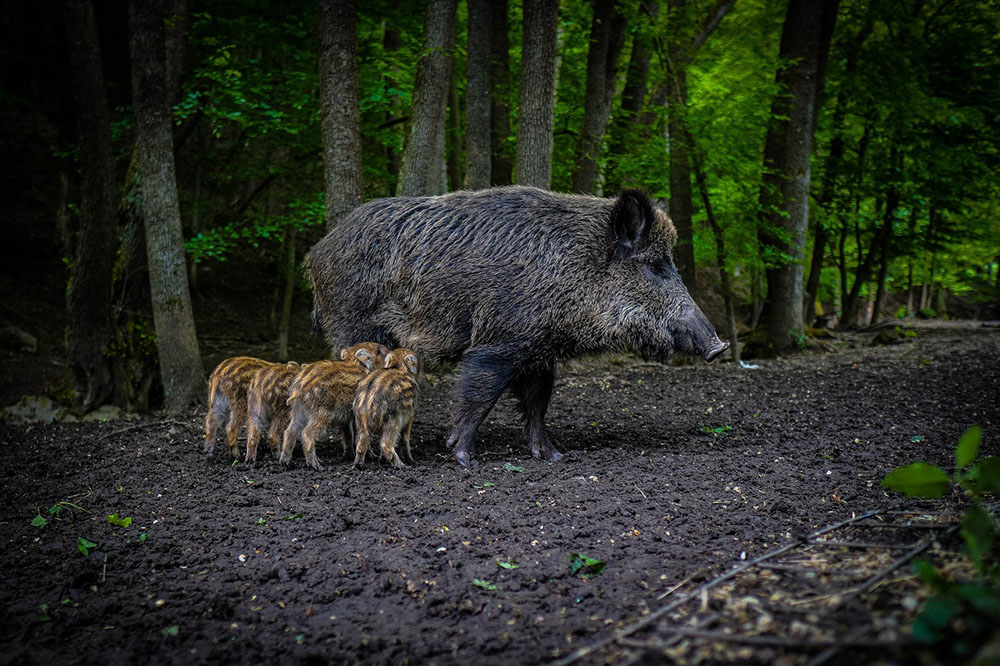
Hog Hunting Tactics
Depending on the conditions of your hunt and your preferences, you may employ different tactics when hunting hogs.
Spot and stalk
The spot and stalk method is one of the most commonly used ways to hunt hogs. This method involves moving slowly through the hunting area looking for signs of hog activity and then stalking close enough to take a shot.
To avoid detection, you need to take advantage of the wind to your advantage by approaching from the downwind side. Spot and stalk hunting hogs require patience and skill.
To successfully detect the wind direction, you can try: How To Use Milkweed For Hunting – Wind Detection.
Stand hunting
The stand hunting method is popular among hog hunters for spotting wild hogs and making them a target. It is common for hunters to set up a treestand or ground blind near a food source, and then wait for hogs to approach. When the hog is within range, the hunter takes a shot at it. When hunting from a tree stand, make sure you wear a safety harness to avoid falling and injury.
Hunting with Dogs
It is effective to hunt hogs with dogs since it allows the hunter to cover more ground and become more familiar with the hogs more quickly. As well as alerting the hunter to the presence of a hog, the dogs can also hold it in place until the hunter is ready to attack.
Driving
Driving is the process of driving hogs out of cover with the help of a group of hunters and putting them in open areas where hunters are waiting in ambush. Hogs are forced to move toward the waiting hunters while driving hunters stay back to avoid getting too close to the hogs. Coordination and communication are essential for success with this method.
Utilize Hunting Light
Hogs are mostly active at night. Using a hog hunting light efficiently can greatly improve your hog hunting success. This light comes in green or red colors and helps in identifying pigs during nighttime. Direct the light towards the field, and its rays will expose the presence of any nearby pigs. This makes it easier to track and target the animals, thus enhancing the likelihood of a successful hunt.
Safety Tips For Hunting Hog
It is dangerous to hunt hogs without following proper safety precautions. To keep yourself safe, follow these tips:
- Treat every firearm as if it’s loaded: Be sure to always keep your muzzle pointed in a safe direction, keep your finger off the trigger until you’re ready to shoot, and unload your firearm whenever possible.
- Know your target and what’s beyond: Always check your line of sight and know what lies beyond your target before taking a shot.
- Always carry a first aid kit: First aid kits are crucial for keeping in case of injuries. Make sure you know how to treat common hunting injuries, like cuts, sprains, and gunshots.
- Be cautious around wounded hogs: Injured hogs can become aggressive and dangerous. Be prepared for the possibility of an attacking or fleeing downed hog when approaching.
- Let someone know your hunting plans: In the event of an emergency, always let someone know when you expect to return from your hunting trip.
After the Hunt
Having successfully harvested a hog, you must field dress and cool the meat as soon as possible so that its quality is preserved. As a beginner, you might be unfamiliar with the process of field dressing. However, there are some online resources to help you.
You can process the hog’s meat yourself or transport it to a processing facility for processing. When transporting and disposing of animal carcasses, be mindful of local laws and regulations.
The final step is to enjoy what you’ve accomplished! When prepared correctly, wild hog meat can make for delicious and versatile meals.
Conclusion
Whether you are a novice or a seasoned hunter, hog hunting can be both rewarding and challenging. By following these hog hunting tips for beginners, you will be able to enjoy your hog hunting experience to the fullest extent and have a successful hunt.
Don’t forget to always prioritize safety, adhere to local hunting regulations, and practice ethical hunting principles when you go out hunting.


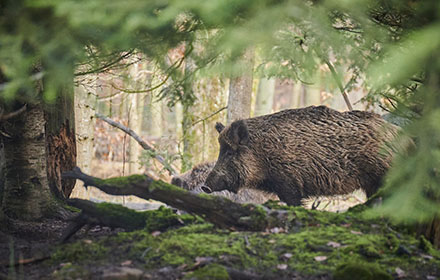








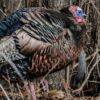








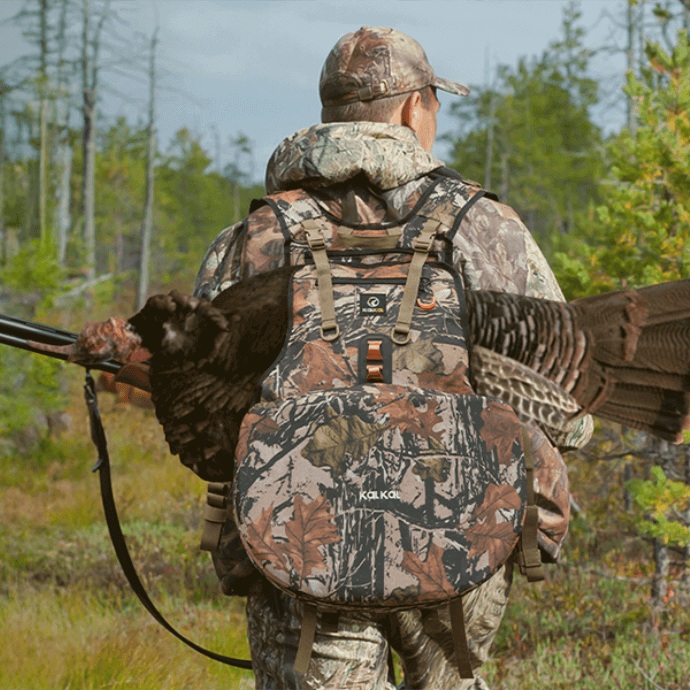
Leave a reply